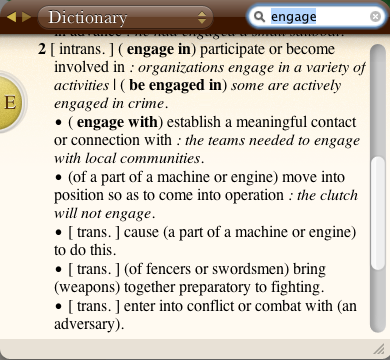How should one feel when they are taking or teaching a class? What does it mean to be feeling trouble and feeling troubled? Here are some passages that I want to consider as I continue to think through my own responses to these questions:
Kevin Kumashiro’s Troubling Education:
Critical pedagogy needs to move away from saying that students need this or my critical perspective since such an approach merely replaces one (socially hegemonic) framework for seeing the world with another (academically hegemonic) one. Rather than aim for understanding of some critical perspective, antioppressive pedagogy should aim for effect by having students engage with relevant aspects of critical theory and extend its terms of analysis to their own lives, but then critique it for what it overlooks or forecloses (49).
Learning that the very ways in which we think and do things is not only partial but oppressive involves troubling or “unlearning” (Britzman) what we have already learned, and this can be quite an emotionally discomforting process, a form of “crisis” (Felman). In particular, it can lead students into what I call a paradoxical condition of learning and unlearning* in which students are both unstuck (i.e., distanced from the ways they have always thought, no longer so complicit with oppression) and stuck (i.e., intellectually paralyzed and needing to work through their emotions and thoughts before moving on with the more academic part of the lesson). Such a paradoxical, discomforting condition can lead students to resist further learning and unlearning and therefore may be seen by educators as something to avoid. Yet education is not something that involves comfortable repeating what we already learned or affirming what we already know. Rather, education involves learning something that disrupts our commonsense view of the world (63).
*This idea of learning and unlearning comes up a lot in a book I’m currently reading (and really enjoying): Cathy Davidson’s Now You See It. Davidson frequently emphasizes 21st century education as involving learning, unlearning and relearning.
Can we imagine an assignment in which teachers ask students to write in ways that trouble familiar stories? Can we imagine an assignment in which the product is less important than the process (66)?
themes: effect not understanding/engagement not comprehension; process not product, learning and unlearning; unsettling/disruptive/uncomfortable; emphasis on troubling stories/understandings; teachers as guides, not experts.
Megan Boler’s “The Pedagogy of Discomfort” in Feeling Power:
The aim of discomfort is for each person, myself included, to explore beliefs and values; to examine when visual “habits” and emotional selectivity have become rigid and immune to flexibility; and to identify when and how our habits harm ourselves and others (185-186).
The first sign of the success of a pedagogy of discomfort is, quite simply, the ability to recognize what it is that one doesn’t want to know, and how one has developed emotional investments to protect oneself from that knowing. This process may require facing the “tragic loss” inherent to educational inquiry; facing demons and a precarious sense of self. But in so doing one gains a new sense of interconnection with others. Ideally, a pedagogy of discomfort represents an engaged and mutual exchange, a historicized exploration of emotional investments. Through education we invite one another to risk “living at the edge of our skin,” where we find the greatest hope of revisioning ourselves (200).
themes: critically assessing habits and breaking bad ones; reflecting on emotional investments in not knowing/refusing to know; developing new connections, understandings, sense of self as flexible/precarious/open; valuing risk
Susanne Luhmann’s “Queering and querying pedagogy”:
Instead of focusing on the common concerns of teaching, such as what should be learned and how to teach this knowledge, pedagogy might begin with the question of how we come to know and how knowledge is produced in the interaction between teacher/text and student (6).
As an alternative to the worry over strategies for effective knowledge transmission that reduce knowledge to mere information and students to rational but passive beings untroubled by the material studied, pedagogy might be posed as a question (as opposed to the answer) of knowledge: What does being taught, what does knowledge do to students (7)?
Alice Pitt (1995) points out: “Learning about content is not the same thing as learning from it. In other words . . . learning is something more than a series of encounters with knowledge; learning entails, rather, the messier and less predictable process of becoming implicated in knowledge” [p. 298](8).
themes: focus on how we come to know/not know, not what we know; exploring what knowledge does to us and how we are implicated in it; effects of knowledge on us, learning/engaging as messy
Paulo Freire’s Learning to Question:
…the point of a question is not to turn the question, “What does it mean to ask questions?” into an intellectual game, but to experience the force of the question, experience the challenge it offers, experience curiosity, and demonstrate it to the students. The problem which the teacher is really faced with is how in practice progressively to create with the students the habit, the virtue, of asking questions, of being surprised (37).
themes: asking questions, developing habits/virtue of curiosity and being surprised, feeling/experiencing the force of questions
One more source to consider: Will the Internet Destroy Academic Freedom? This blog post for Wired Campus on The Chronicle has some great comments (and some very problematic ones too) about what the goal of teaching is/isn’t. As an aside, the title also offers up an effective example of a leading question–the type of question that does not usually encourage troublemaking, creativity, critical thinking or curiosity and that is often posed by professors who already know the answer (or at least know the answer that they want/expect/demand).


